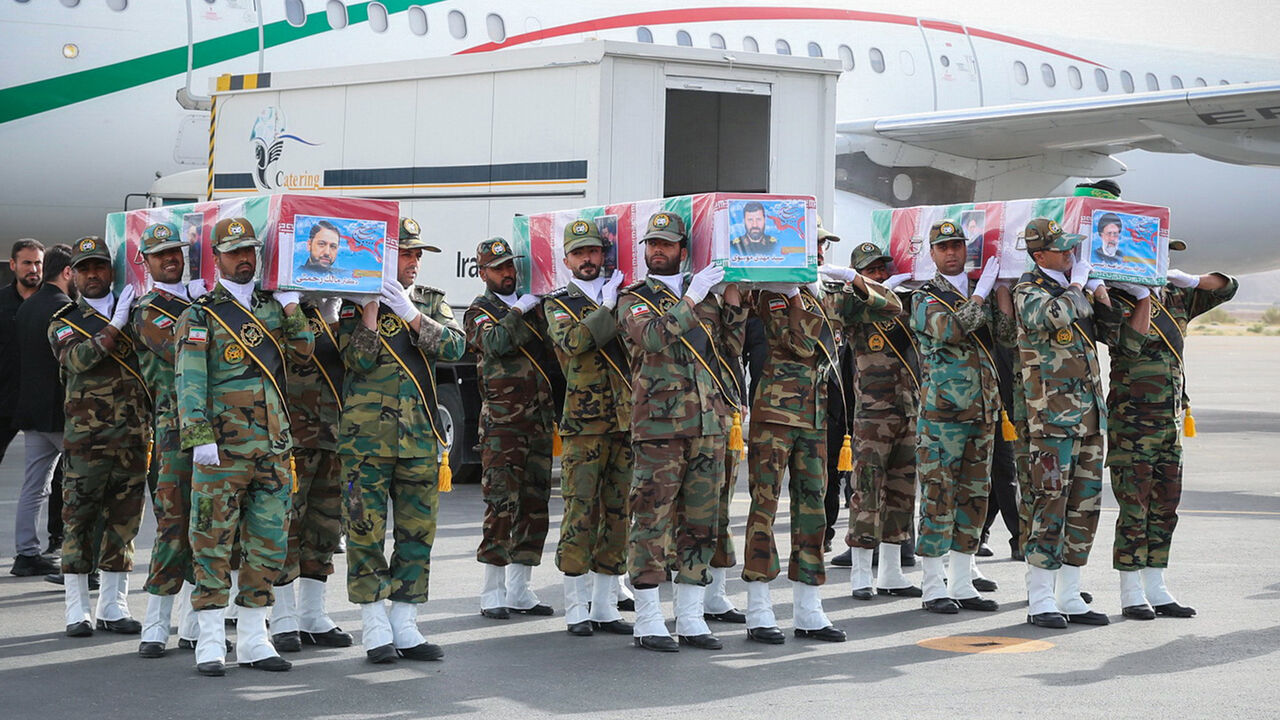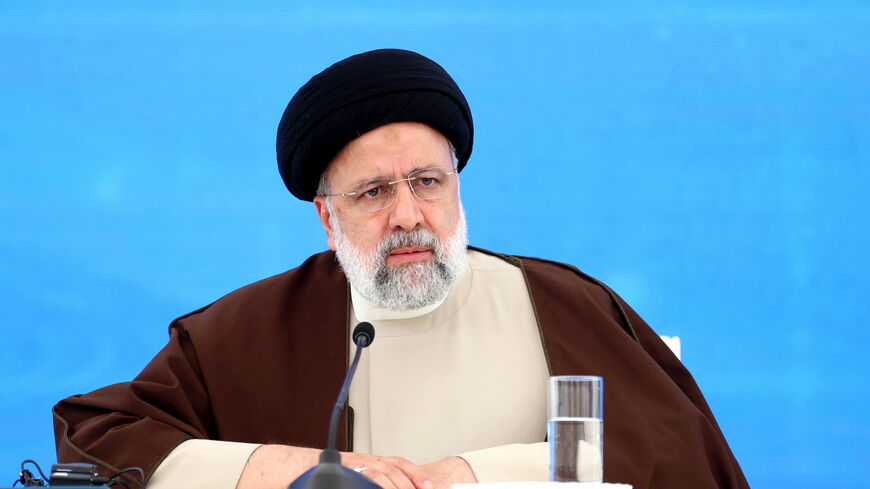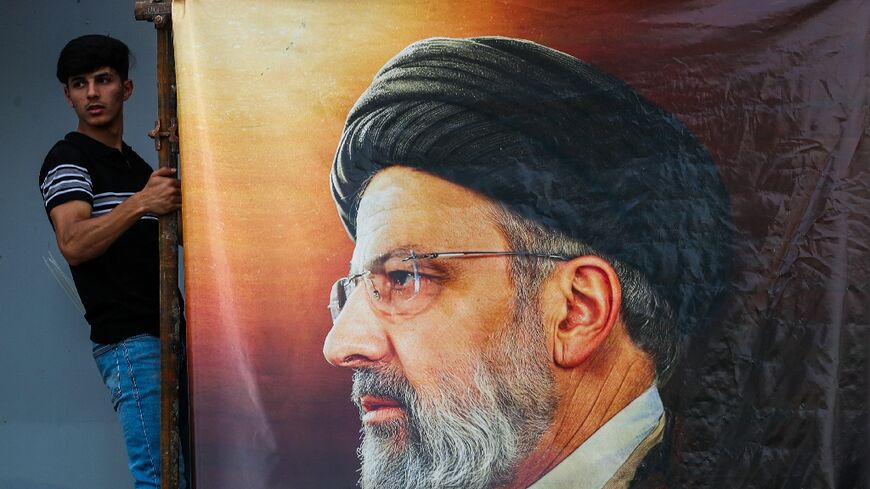Iran investigates Raisi helicopter crash: What we know
Some Iranian officials have blamed US sanctions for the helicopter crash that led to President Ebrahim Raisi’s death, while the first government report on the matter said nothing suspicious occurred.

The Iranian military released its first report on Thursday of the deadly helicopter crash that killed President Ebrahim Raisi, declaring that the incident was not the result of foul play.
What happened: On Sunday, an American Bell 212 helicopter carrying Raisi, Foreign Minister Hossein Amir-Abdollahian and other officials crashed in a mountainous area of northwest Iran, killing all eight people on board. The group had been on its way back from a visit to the Azerbaijani border. Early Iranian reports indicated there were foggy conditions in the area and that it took rescuers several hours to find the wreckage. The helicopter was several decades old, according to reports in international media.
The Iranian Armed Forces’ General Staff released its first report on the crash on Thursday after an investigative team went to the crash area on Monday. The report noted the following, according to the official Islamic Republic News Agency:
- The helicopter had been flying along its pre-planned route and did not deviate from its course.
- The aircraft caught fire after crashing into a mountainous area.
- The wreckage did not show any signs of bullet holes or similar impacts.
- Iranian drones determined the location of the crash.
- Communications between the helicopter crew and ground control did not contain any “suspicious” content
The investigation may not be finished, however. The agency noted that the public would be informed of “any follow-up findings in due course,” citing the report.
Why it matters: The report follows speculation over what led to the crash. On Monday, former Foreign Minister Mohammad Javad Zarif blamed US sanctions for the incident.
“One of the culprits behind yesterday’s tragedy is the United States, because of its sanctions that bar Iran from procuring essential aviation parts,” Zarif told state media.
Iran purchased US aircraft under the reign of Shah Mohammad Reza Pahlavi. The US-backed leader was ousted during the 1979 Islamic revolution, leading to the creation of the current Islamic Republic. The United States has maintained a variety of sanctions on Iran since then, including on the country’s aviation industry.
The aviation sanctions were relaxed in 2015 via the Iranian nuclear deal, allowing Iran to buy from US companies like Boeing. However, former US President Donald Trump withdrew from the deal in 2018 and reimposed the sanctions.
A 2019 Treasury Department advisory noted that transferring aircraft and related goods, technology and services to Iran is prohibited unless exempted by the department. The Trump administration argued at the time that Iranian airlines supported terrorism and the Islamic Republic’s military activities.
The Treasury Department further asserted that Iran can still procure aircraft parts despite the reimposition of the sanctions.
“Iranian persons continue to circumvent US sanctions and procure US-origin aircraft parts through third-party suppliers from multiple jurisdictions in Europe, East Asia and the Middle East, with many parts originating from suppliers in North America and Europe,” read the 2019 advisory.
US State Department spokesperson Matt Miller dismissed Zarif’s comments in remarks to reporters on Monday.
“We are not going to apologize for our sanctions regime at all. The Iranian government has used its aircraft to transport equipment to support terrorism,” he said. “Ultimately, it’s the Iranian government that is responsible for the decision to fly a 45-year-old helicopter in what was described as poor weather conditions, not any other actor.”
The crash has put a spotlight on Iran’s aviation sector. The country’s aircraft fleet was described as “antiquated” in a Tuesday article in Forbes. Paul Iddon wrote, “Why the helicopter was authorized to fly in foggy weather and extremely low visibility in a mountainous region is unclear. What is clear is the Bell 212, while undoubtedly a durable and venerable helicopter carrying the president and these officials, was most likely 40-50 years old.”
Iran’s aircraft are not solely US made. The Iranian military uses the Russian Ilyushin Il-76 airlift plane, for example.
Iran has experienced other deadly aircraft incidents in the recent past. In 2020, Iranian forces shot down Ukraine International Airlines Flight 752 shortly after takeoff in Tehran, killing 176 people on board. The Iranian government claimed it mistook the airplane for a missile during its attack on US forces in neighboring Iraq.
In 2018, Iran Aseman Airlines Flight 3704 crashed into the Zagros mountains in central Iran, leading to the deaths of all 66 people onboard.
Know more: The Iranian report did not mention Turkey’s role in the response to the crash. Turkey dispatched its Bayraktar Akinci drone and a Cougar helicopter to Iran on Sunday to help find Raisi’s helicopter. Turkish Transportation Minister Abdulkadir Uraloglu said on Monday that the drone’s “detections” helped determine the site of the crash.







